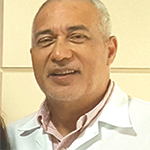Mathematical Metrics
The paper written by Daniel Aletaha and Josef Smolen, “Remission in Rheumatoid Arthritis: Missing Objectives by Using Inadequate DAS28 Targets,” provides encouragement to rheumatologists who have maintained the Aristotelian ideal of advancing science through a metaphysic reasoning not dissociated from real life.11
The staging of RA proposed by Otto Steinbrocker et al., and later refined with a scoring model by Desiree van der Heijde et al. and Robert Pinals et al., was fundamental because it created mathematical metrics and standardized clinical research, enabling advances in discovery and development of new treatments.5,7,8
However, the scientific process demands physicians use their expertise to phenotype and individualize the management of our patients instead of mathematizing them. Unfortunately, the misuse of evidence-based medicine created a pseudo-science of statistics that has infected many medical specialties, including rheumatology. The deification of science has allowed many popes to pursue the idea of scientists as heralds of absolute truth, converting them to clergy of scientism.
Limits of Classification
Therapeutic and remission criteria are constantly being refined in the pursuit of a utopian perfection. Although such criteria as DAS28 and others may be useful to aid research, they may do more harm than good if misused in clinical practice, move the focus from patients to numbers.
We hope rheumatologists never lose the essence of what made most of us choose this specialty: the need to listen to, talk with and examine our patients. Thus, we believe that sharing experiences still is an excellent way of advancing knowledge, not just relying on statistics and numbers. We hope that, as physicians, we shall avoid the mathematization of the bedside medical practice. May math be our crutch, but never our feet.
 Carlos Antonio Moura, MD, is a rheumatologist and staff of the internal medicine residency program at Hospital Santo Antônio and Hospital Geral Roberto Santos, in Salvador, Bahia, Brazil. He also teaches at Salvador University and Escola Bahiana de Medicina e Saúde Pública.
Carlos Antonio Moura, MD, is a rheumatologist and staff of the internal medicine residency program at Hospital Santo Antônio and Hospital Geral Roberto Santos, in Salvador, Bahia, Brazil. He also teaches at Salvador University and Escola Bahiana de Medicina e Saúde Pública.
 Ana Luísa Cerqueira, MD, is a resident in internal medicine at Hospital Santo Antônio, Salvador, Bahia, Brazil.
Ana Luísa Cerqueira, MD, is a resident in internal medicine at Hospital Santo Antônio, Salvador, Bahia, Brazil.
 Carlos Geraldo Moura, MD, is a rheumatologist and chief of the internal medicine residency program at Hospital Santo Antônio in Salvador, Bahia, Brazil, and teaches at Escola Bahiana de Medicina e Saúde Pública.
Carlos Geraldo Moura, MD, is a rheumatologist and chief of the internal medicine residency program at Hospital Santo Antônio in Salvador, Bahia, Brazil, and teaches at Escola Bahiana de Medicina e Saúde Pública.
References
- Dawson C. Religion and the rise of Western culture: The classic study of medieval civilization. É Realizações. 2016. 2nd edition.
- de Carvalho O. O jardim das aflições: De epicuro à ressurreição de César: Ensaio sobre o materialismo e a religição civil. Vide Editorial. 2015. 3rd edition.
- Entezami P, Fox D, Clapham P, et al. Historical perspective on the etiology of rheumatoid arthritis. Hand Clin. 2011 Feb;27(1):1–10.
- Fraser KJ. The Waaler-Rose test: Anatomy of the eponym. Semin Arthritis Rheum. 1988 Aug;18(1):61–71.
- Steinbrocker O, Traeger CH, Batterman RC. Therapeutic criteria in rheumatoid arthritis. J Am Med Assoc. 1949 Jun 25;140(8):659–662.
- Ropes MW, Bennett GA, Cobb S, et al. Proposed diagnostic criteria for rheumatoid arthritis. Ann. Rheum Dis. 1957 Mar;16(1):118–125.
- Pinals RS, Masi AT, Larsen RA. Preliminary criteria for clinical remission in rheumatoid arthritis. Arthritis Rheum. 1981 Oct;24(10):1308–1315.
- van der Heijde DM, van’t Hof MA, van Reil PL, et al. Judging disease activity in clinical practice in rheumatoid arthritis: First step in the development of a disease activity score. Ann Rheum Dis. 1990 Nov;49(11):916–920.
- Hochberg MC, Chang RW, Dwosh I, et al. The American College of Rheumatology 1991 revised criteria for the classification of global functional status in rheumatoid arthritis. Arthritis Rheum. 1992 May;35(5):498–502.
- Weisman MH. Treat to target in rheumatic diseases: Rationale and results. Rheum Dis Clin North Am. 2019 Nov;45(4);ix–x.
- Aletaha D, Smolen J. Remission in rheumatoid arthritis: Missing objectives by using inadequate DAS28 targets. Nat Rev Rheumatol. 2019 Nov;15(11):633–634.
